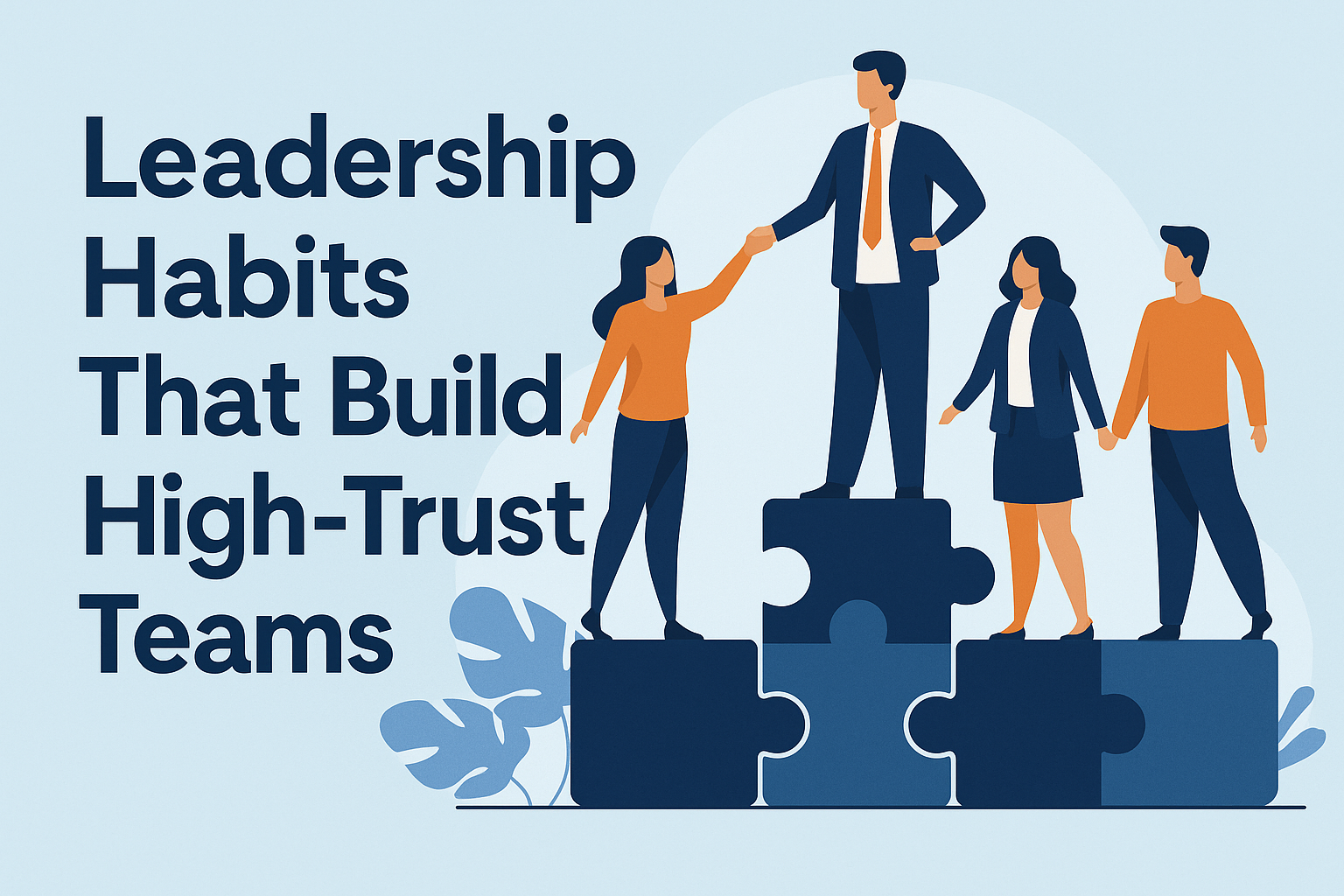Trust is the foundation of every successful business — but for small business owners, it’s even more critical. Without big corporate structures to lean on, the strength of your team dynamic can make or break your growth. Developing the right leadership habits for small business owners is the surest way to create a culture where trust isn’t just encouraged — it’s expected.
Let’s dive into the specific behaviors, strategies, and examples that help leaders build truly high-trust teams.
Why Trust is a Small Business Owner’s Superpower
Unlike large companies with layers of policies and hierarchies, small businesses operate on agility and interpersonal relationships. When your team trusts you — and each other — they:
- Communicate openly and solve problems faster
- Take smart risks without fear of blame
- Show loyalty and stay committed through challenges
- Bring their best ideas and energy to the table
In contrast, a low-trust environment breeds hesitation, fear, and turnover — all of which can cripple your business momentum.
Building trust isn’t complicated, but it does require consistent leadership habits over time.
Essential Leadership Habits for Small Business Owners
1. Lead with Transparency
Example:
Hold a monthly team meeting where you share key business metrics, upcoming challenges, and strategic priorities — even when the news isn’t perfect.
Actionable Tip:
Make transparency a default, not a special occasion. Use open dashboards, project updates, and financial insights to involve your team meaningfully.
“People will support what they help create.”
2. Deliver on Promises
Example:
If you promise career development opportunities during hiring, actually follow through with mentoring sessions, cross-training, or external courses.
Actionable Tip:
Keep a simple “promise tracker” — a private list where you note every commitment you make to your team, big or small, and ensure follow-up.
3. Practice Active Listening
Example:
During 1:1s, listen without interrupting, take notes, and ask clarifying questions before offering your viewpoint.
Actionable Tip:
Use the “3-2-1” method: After every employee conversation, note 3 things you heard, 2 questions you want to follow up on, and 1 action you can take.
4. Give Credit and Share Wins
Example:
Instead of saying “We landed the deal,” name the individuals who contributed and highlight their specific work during a team huddle.
Actionable Tip:
Start every team meeting by recognizing 1-2 recent contributions publicly. Make it personal, specific, and heartfelt.
Looking for more ways to strengthen your company culture? Explore business planning services that align your operations and leadership vision.
5. Model Accountability
Example:
If a project misses a deadline due to your delay, own it publicly rather than blaming the team.
Actionable Tip:
End every week with a personal “accountability reflection” — where you review what you did well and where you can improve.
6. Be Consistently Approachable
Example:
Set regular “office hours” where any employee can stop by (or message you) about ideas, frustrations, or feedback — no formal meeting required.
Actionable Tip:
Block a weekly hour on your calendar labeled “Team Office Hour” and make it visible to everyone.
Building Trust is an Ongoing Practice
Trust isn’t something you achieve once and then forget about. It’s built — and rebuilt — in every interaction, decision, and communication. As a small business owner, your leadership habits set the tone.
When you lead with transparency, deliver on promises, listen actively, share credit, model accountability, and remain approachable, you create a workplace where trust thrives.
If you’re serious about sharpening your leadership skills and accelerating your team’s growth, schedule a discovery call with Scotch Creek Consulting. Let’s help you lead with confidence — and results.


